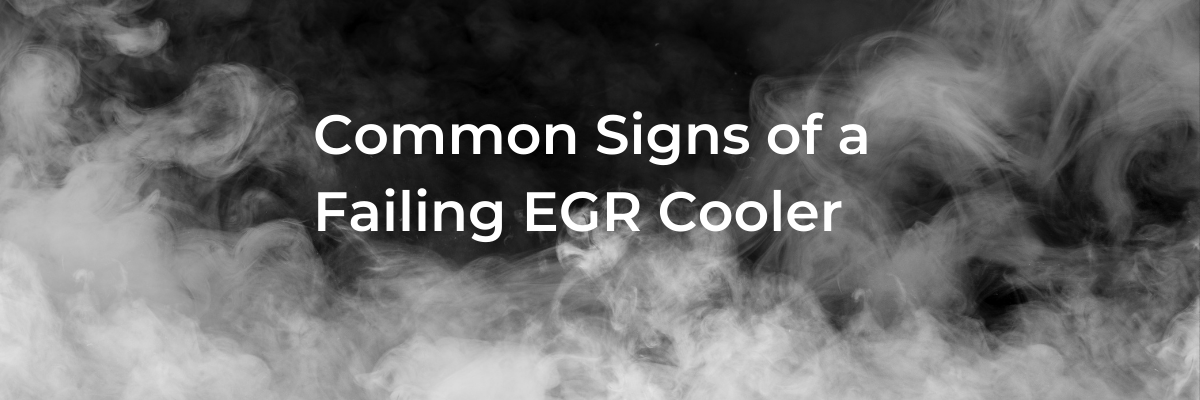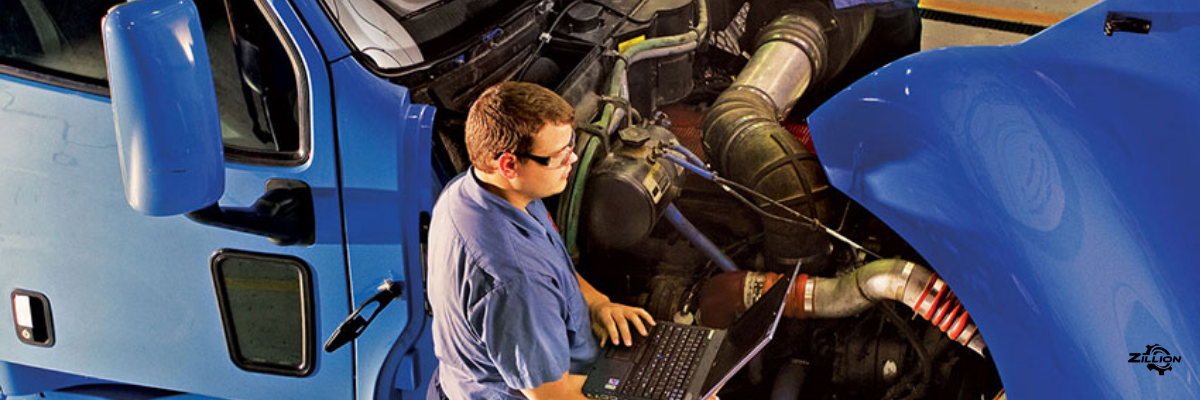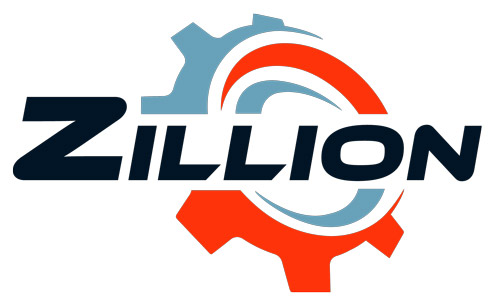
As a recap, Exhaust Gas Recirculation Coolers (EGR) cool the exhaust gases, and reduce nitrogen oxide emissions (NOx) for heavy duty internal combustion engines to meet emissions standards set by the US Environmental Protection Agency.
In this article we’ll discuss:
- Common Signs of Failing EGR Cooler
- Possible Causes for EGR Cooler Failing
- Solutions for Failing EGR Cooler
- Common Engine Codes for Failing EGR Cooler

Common Signs of a Failing EGR Cooler
There are three main signs of a leaking EGR cooler:
- White Smoke: When the EGR cooler leaks, coolant can mix with exhaust gases, creating steam that comes out as white smoke from the exhaust. This indicates a problem with the EGR system.
- Low Coolant: If you notice your coolant level dropping but don't see any leaks, it could mean the EGR cooler is leaking internally. This can lead to engine overheating and more white smoke from the exhaust.
- Dirty EGR Valve: Look at the EGR valve. Normally, it's coated in black charcoal carbon (soot) from the exhaust. But if the EGR cooler is leaking, it might be covered in a slimy black substance, caused by coolant mixing with exhaust steam. This can clog the valve and cause issues with engine performance.
Note: if enough coolant and water is mixed, it could lead to engine overheating
If you have any of these three symptoms, that’s a strong indicator that the EGR cooler is failing. Not addressing these problems may lead to further engine damage such as bending connecting rods, stretching head bolts, or blowing the head gaskets, causing severe engine damage.
Common Problems, Causes and Solutions for EGR Cooler Failure
|
Common Problems |
Causes |
Solutions |
|
|
Over time, carbon can clog the EGR cooler, making it less efficient.
|
Regular maintenance, such as using fuel additives or performing periodic cleanings, can help prevent carbon buildup. Additionally, ensuring proper engine combustion and using high-quality fuel can reduce carbon emissions. |
|
|
Continuous exposure to hot, corrosive gases can rust the EGR cooler's insides.
|
Utilizing corrosion-resistant materials in the construction of the EGR cooler and implementing effective coolant management strategies, such as regular coolant flushes and inspections, can mitigate corrosion issues. |
|
|
If installed incorrectly, the EGR may fail over time.
|
Ensuring that the EGR cooler is installed correctly according to manufacturer specifications and guidelines can prevent long-term failure. Proper torque settings and sealing techniques are essential during installation. |
|
|
When the engine gets too hot or the cooling system isn't maintained well, the EGR cooler can overheat and break.
|
Implementing an engine cooling system maintenance practice, such as regular coolant level checks, coolant flushes, and radiator inspections, can prevent engine overheating and damage to the EGR cooler. |
|
|
Quick temperature changes can strain the EGR cooler, causing cracks or leaks.
|
Designing EGR coolers with robust materials and thermal management systems can help mitigate the effects of thermal stress. Trying to avoid rapid temperature changes with heat shields and proper coolant management can reduce the likelihood of thermal-related failures.
|

Common Engine Codes for Failing EGR Cooler
The engine code for a faulty EGR cooler can vary depending on the make and model of the vehicle. Below are common diagnostic trouble codes (DTCs) related to EGR cooler issues include:
- P0401: Exhaust Gas Recirculation (EGR) Flow Insufficient
- P0402: Exhaust Gas Recirculation (EGR) Flow Excessive Detected
- P0403: Exhaust Gas Recirculation (EGR) Circuit Malfunction
- P0404: Exhaust Gas Recirculation (EGR) Circuit Range/Performance
- P0405: Exhaust Gas Recirculation (EGR) Sensor "A" Circuit Low
- P0406: Exhaust Gas Recirculation (EGR) Sensor "A" Circuit High
- P0407: Exhaust Gas Recirculation (EGR) Sensor “B” circuit low
- P0408: Exhaust Gas Recirculation (EGR) Sensor “B” circuit high
- P1403: Exhaust Gas Recirculation (EGR) solenoid low
- P1404: Exhaust Gas Recirculation (EGR) system – closed valve pintle error
- P1405: Exhaust Gas Recirculation (EGR) solenoid high
- P1406: Exhaust Gas Recirculation (EGR) system pintle position error
These are general codes and it's best to consult with a mechanic to properly diagnose the situation and find suitable solutions.
Conclusion
The causes of EGR problems range from carbon buildup and corrosion to improper installation, overheating, and thermal stress. However, proactive maintenance practices and right solutions can effectively mitigate these issues. By implementing regular cleaning routines, using corrosion-resistant materials, adhering to proper installation procedures, maintaining the engine cooling system engine damage can be avoided prolonging EGR’s longevity.

Zillion Heavy Duty Parts believes in cultivating leadership that will reshape the future. Sharing knowledge is a journey to redefining the industry. Visit ZillionHD.com for more information on how to become a Zillion distributor. Join us in revolutionizing the trucking industry and creating a future where liberty knows no bounds. To learn more about heavy duty parts listen to The Heavy Duty Parts Report .





